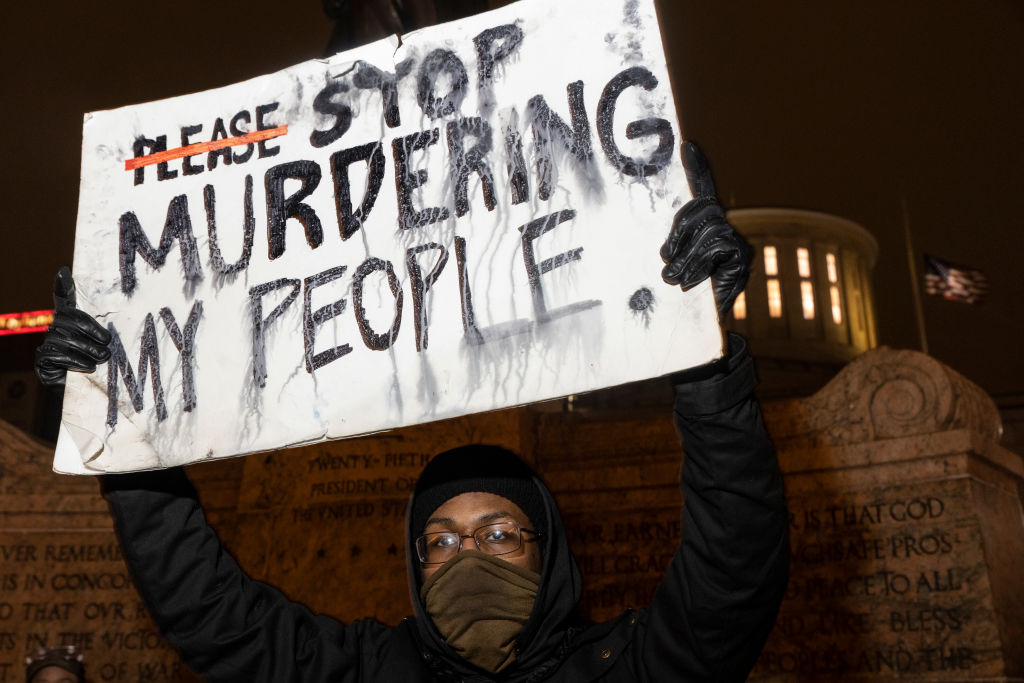
George Floyd’s death in police custody brought a huge and a rapid increase in protests over police brutality—thousands of marches driven by the assumption that taking to the streets will bring change. Does it?
Critics argue that protest brings mostly more strife, pointing to the weeks of violent demonstrations in Portland, Ore., or the melee during the protests over the Jacob Blake shooting in Kenosha, Wis., that culminated in the Rittenhouse shootings. Is protest a positive force for progressive change? As a researcher, I set out to find out, focusing on public demonstrations against police violence that occurred years before Floyd was killed.
The results were clear—at least where the issue was local. My study of America’s 170 largest cities between 2000 and 2019 found that street protests were followed by declines in officer-involved fatalities of Black and Latino individuals (though not for whites). In fact, the empirical analysis indicates that just one protest in a given city would reduce black fatalities by 11 percent and Latino fatalities by 7 percent in the following year.
The study also looked at the impact of civilian review boards. Starting in the 1960s, activists pressed for these citizen-run watchdogs, on the theory that their monitoring presence would enforce reforms and accountability. The authority of these boards ranged enormously, some merely making recommendations to the police chief, a few with the power to subpoena and fire police officers. All, however, at least appeared to signal progress. Many CRBs resulted from community protests opposing police brutality.
Yet establishing them did not reduce fatalities, my study found. There was no difference in fatalities in cities that had boards and cities that did not. Of the 170 cities in the study, fewer than half had a civilian review board by 2018.
Does anything else work? My preliminary evidence showed that body cameras seem to have an effect. Black and Latino fatalities by police appear to be down significantly in cities where officers were required to wear body cams, but because this data is often compiled at the state level the link is not as tidy.
More from TIME
What is clear is the effect of protests. Locally-oriented demonstrations significantly reduce the number of Black and Latino deaths by police. So might policy changes concerning new restraints on the use of force. Cities with higher median family income also saw a decline in fatalities across all groups, but more so for whites.
Taking the issue of police violence to the streets makes sense, in part because social movements—such as the civil rights movement, the LGBTQ movement, or the movement against police brutality—are commonly organized by underrepresented or marginalized groups who have relatively limited access to power. Protest frequently offers the only viable avenue for disadvantaged groups to express discontent. So if American citizens are concerned with producing policies that reduce inequality in power, resources, and opportunity, the data are clear that protest holds some promise.
More Must-Reads From TIME
- The 100 Most Influential People of 2024
- The Revolution of Yulia Navalnaya
- 6 Compliments That Land Every Time
- What's the Deal With the Bitcoin Halving?
- If You're Dating Right Now , You're Brave: Column
- The AI That Could Heal a Divided Internet
- Fallout Is a Brilliant Model for the Future of Video Game Adaptations
- Want Weekly Recs on What to Watch, Read, and More? Sign Up for Worth Your Time
Contact us at letters@time.com